Moniek Bloks's Blog, page 33
November 8, 2024
The Year of Isabella I of Castile – Joanna of Castile, Under Lock and Key (Part three)
Joanna’s husband and father conspired to keep her from public view, and Philip planned to rule over Joanna’s Kingdom of Castile himself. People were led to believe that Joanna was mentally ill and could not govern. Things took a shocking turn when Philip died suddenly, leaving Joanna pregnant and widowed but free to reign.
During this time, Castile was in a terrible state; there was widespread famine, drought and disease, and the Cortes was unstable. Joanna tried to take control of Castile but could not drum up enough money or support. In January 1507, Joanna gave birth to her daughter, Catherine, and at this time, a regency council tried desperately to bring Castile under control.1 Thankfully, the famine and plague started to retreat. As this coincided with Ferdinand’s return in July, many people believed that Ferdinand himself had restored Castile’s good fortunes. Joanna was overjoyed to see her father again, though before long, he began to proclaim that she had handed her realm over to him for the “peace and security of the kingdom.” 2 Joanna had made it very clear that she did not want to renounce her powers and would not sign anything. Her father forged her signature, meaning she was not needed from this point and was a mere figurehead and a Queen in name only.3
Joanna had little choice but to slip out of the public eye and fall under her father’s control. Soon, her father was reorganising her household, controlling her finances and deciding who she could and couldn’t see. It was as if she was back under the control of her husband all over again. In 1509, Joanna was moved to the Royal Palace in Tordesillas with only a small number of household staff.4 With her out of the way, it was easy for Ferdinand to tell everyone that Joanna was completely insane, the death of her husband having made her mental state even worse.
There was one way that Joanna could escape her terrible situation, and that was by remarrying. Plans were drawn up for her to marry the recently widowed King Henry VII of England – the father-in-law of her sister Catherine. Joanna was an eligible match and a proven bearer of healthy children and Henry did not believe she was insane. Sadly, King Henry VII passed away in 1509, and the wedding never took place, leaving Joanna alone at Tordesillas.5
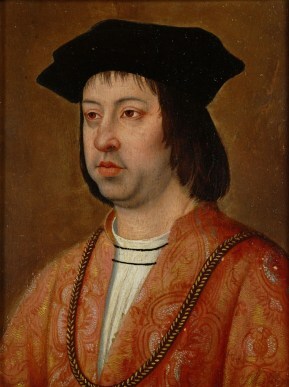 King Ferdinand II of Aragon (public domain)
King Ferdinand II of Aragon (public domain)In 1516, Joanna’s father, Ferdinand, passed away, and she then became Queen of Aragon as well as Queen of Castile.6 The Queen may have believed that she would soon be free to rule her own realms, but before long her eldest son Charles took over her guardianship. Charles was sixteen at this point and had not seen his mother for ten years. As far as he was aware, she was incapable of reigning, and he made no effort to get to know her personally. Instead, he kept her locked away and merely carried on paying for her basic expenses.
After years of social isolation, being held in just two rooms, it is understandable that Joanna occasionally lashed out.7 If she were not listened to, Joanna would sometimes starve herself, refuse to sleep or go into an angry rage. This has, of course, been put down to mental illness, but with no other way to assert herself, maybe this was all Joanna could do when she needed something or wished to get the attention of her son.
In addition to being kept prisoner by her son Charles, Joanna also had to deal with her guardians, who watched over her night and day. This succession of governors, such as the Mosen Ferrer and the Marquis of Denia, went far beyond their duties and went out of their way to be cruel to Joanna; they would steal from her and lie to her to further isolate her.8 At one stage, Joanna was led to believe that her father Ferdinand was still alive when he had passed away, and at another time, when Joanna wished to be relocated, Denia told her that each place she suggested was in the grip of the plague and even had coffins paraded around outside for her to see.9 When her son Charles succeeded as Holy Roman Emperor and one of Europe’s most important rulers, these guardians could do as they wished with Joanna. It is reported that she was even beaten and abused by her guardian, Mosen Ferrer.10
[image error]Charles V, Holy Roman Emperor- Joanna’s son (public domain)In 1520, Charles was out of the country, and a chance of escape was opened up for the imprisoned queen. A group of officials had approached the castle and wished to see Joanna. They told her that Castile was in turmoil, and they wanted her to join their rebellion and back their cause. Tordesillas soon fell under rebel control, and Joanna was inside the castle with the group of men. This went on for months, with Joanna and her daughter Catherine living alongside the rebels. The queen was kind to the men but would not sign anything that would jeopardise her sons’s power in Castile. Before long, Charles returned to Castile with his army; Joanna was amid open warfare. Joanna would not act against Charles and was soon returned to her usual apartments. Though fighting continued for many more months, Castile was back under Charles’ control. Joanna had given up her only chance of freedom in order to show loyalty to her son.11 The rebels reported that Joanna was “perfectly sane” and was being “tyrannically detained” at the castle. 12 Despite proving her capacity to reign and her loyalty to her son, Joanna was not allowed any further freedom after this rebellion.
After the rebellion came to an end, Denia wrote to Charles that Joanna had become spoilt by the attention during the revolt and said “if your majesty would apply the torture” suggesting he should be allowed to physically punish Joanna into complying. We do not know what Charles’ response was to this letter.13 Charles had many dominions to rule over, and often, he simply forgot about his mother. His sister Catherine wrote to him, “The Queen, my lady, wishes to walk for her recreation in the corridor, on the river or if she wishes to go to the large room to refresh herself.” 14 This shows that as time went on, nothing changed for Joanna, and she was deprived of even basic wishes such as a walk outdoors.
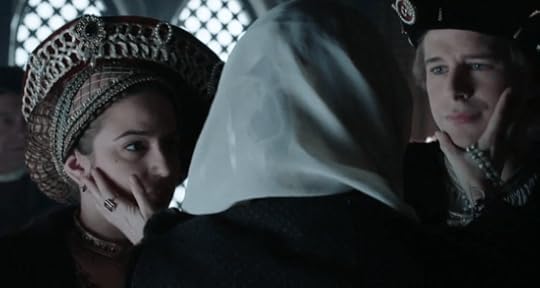 Charles and Eleanor meet their mother as portrayed in Carlos, Rey Emperador (2015)(Screenshot/Fair Use)
Charles and Eleanor meet their mother as portrayed in Carlos, Rey Emperador (2015)(Screenshot/Fair Use)Time went on slowly for Joanna, who had few visitors other than her staff and some family members. She was especially lonely once Catherine moved out to be married. These visits from family filled Joanna with joy, and she loved to receive letters, news and portraits from her children and, later in life, her grandchildren. In 1554, for example, Joanna was overjoyed to hear that her grandson Philip had married her niece – Queen Mary I of England.
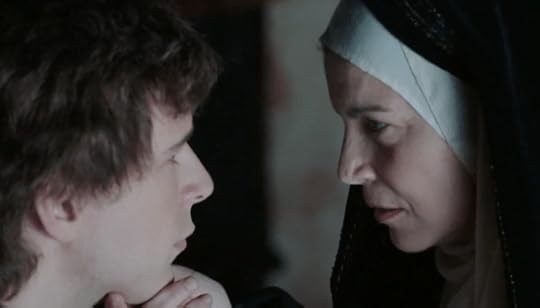 Joanna and Charles as portrayed in Carlos, Rey Emperador (2015)(Screenshot/Fair Use)
Joanna and Charles as portrayed in Carlos, Rey Emperador (2015)(Screenshot/Fair Use)By 1555, Joanna’s health had taken a rapid decline, and before long, she was confined to her bed and died on 12 April after a staggering 46 years imprisoned in Torsedillas.
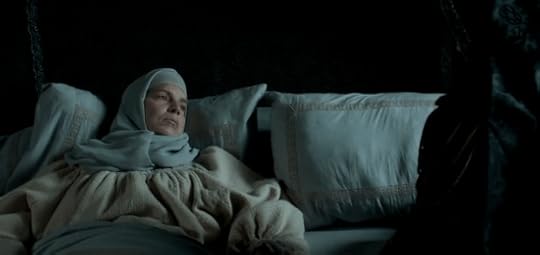 Eleanor visits Joanna’s deathbed as portrayed in Carlos, Rey Emperador (2015)(Screenshot/Fair Use)
Eleanor visits Joanna’s deathbed as portrayed in Carlos, Rey Emperador (2015)(Screenshot/Fair Use)Joanna left behind a legend of a mad queen who was locked away for her own good. While she may have sometimes struggled with her mood or could have been seen as “excessive in her reactions and her paranoia”, this would not have stopped Joanna from reigning as a regnant Queen. She was prevented from ruling over Castile and Aragon by the men in her life: her father, her husband and her son, who schemed to have her locked away and made her seem insane and incapable.15
Joanna’s legacy was her six children and over twenty grandchildren who ruled over much of Europe.
Sources
J. Fox., Sister Queens: Katherine of Aragon and Juana, Queen of Castile
G. Tremlett., Isabella of Castile- Europe’s First Great Queen
B. Aram, Queen Juana: Legend and History in M Gomez, S Juan-Navarro, P. Zatlin., Juana of Castile- History and Myth of the Mad Queen
E. Gascon Vera., Juana I of Castile, Catherine of Aragon and the Failure of Feminine Power and in the Construction of Empire in M Gomez, S Juan-Navarro, P. Zatlin., Juana of Castile- History and Myth of the Mad Queen
The post The Year of Isabella I of Castile – Joanna of Castile, Under Lock and Key (Part three) appeared first on History of Royal Women.
November 7, 2024
Empress Eugenie’s Pearl Tiara
Empress Eugenie’s Pearl Tiara was a gift to Empress Eugenie from her future husband, Emperor Napoleon III.
It was made by Alexandre-Gabriel Lemonnier with stones that used to belong to Empress Marie Louise, the wife of Emperor Napoleon I, and Marie Thérèse, Duchess of Angoulême, the only surviving child of King Louis XVI and Queen Marie Antoinette. In total, there are more than 200 pearls and almost 2000 diamonds in this tiara. The base of the tiara is silver.
Despite the tiara being a wedding, it became part of the French royal collection. This meant that the tiara stayed in France after the royals were again exiled. It went on display several before being auctioned off by the French government. It was bought by Albert, 8th Prince of Thurn and Taxis, for his future wife, Archduchess Margarethe Klementine of Austria, in 1890. The last Thurn and Taxis bride to wear it was Gloria von Schönburg-Glauchau when she married Johannes, 11th Prince of Thurn and Taxis, in 1980.1
Embed from Getty ImagesEmbed from Getty ImagesIt was Gloria who sold the tiara following her husband’s death in 1992. The Friends of the Louvre paid around a million dollars and the tiara is now on permanent display in the Louvre Museum.2
The post Empress Eugenie’s Pearl Tiara appeared first on History of Royal Women.
November 6, 2024
The Year of Isabella I of Castile- Joanna of Castile, A Regnant Queen (Part two)
Joanna was the third child of the Catholic Monarchs, King Ferdinand II of Aragon and Isabella I of Castile. Married to the Philip Duke of Burgundy in 1496, she was destined to live out her days in the Low Countries and bear children for the Habsburg dynasty. Joanna’s life changed suddenly when several family deaths led to her being declared as her parents’ heir. Joanna and Phillip travelled to Spain to be formally proclaimed heirs in 1502, though Philip left his pregnant wife there alone when he was only declared to be a future consort and not a co-monarch.
Joanna was pregnant with her fourth child, so she could not leave for Burgundy with Philip and remained with her parents. Isabella was thrilled to have her daughter home and wished to take the opportunity to teach her how to be queen. Joanna’s child arrived safely on 10 March 1503; this little boy named Ferdinand, in honour of his grandfather, joined three siblings – Eleanor, Charles and Isabella. 1
Joanna remained with her parents for three years in total, returning to her husband in 1504. While she was initially happy to be reunited with Philip, it was not long before he became controlling again, restricting her spending and flaunting his mistresses around the court. Joanna lashed out about these mistresses in public, which proved rumours of her mental instability to be correct in the minds of many.
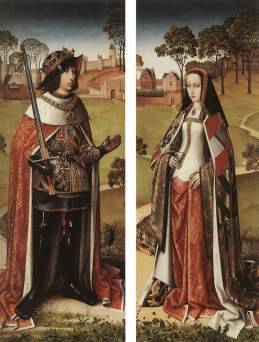 (public domain)
(public domain)In November 1504, Joanna had barely settled back into her life with Philip when she heard the devastating news that her mother, Isabella, had died. Joanna was now Queen of Castile. Isabella had clearly been worried about the succession in her final days, as her will reflected concerns about Joanna’s ability to rule. However, we do not know if Isabella was concerned about Joanna’s mental health or Philip taking control of Castile, as there is no explicit detail. What we know is that Isabella wrote that if Joanna “might not like or might be unable to rule”, then King Ferdinand should take over and rule until Joanna’s son Charles reached his majority.2 As Ferdinand was enraged at losing his status as King of Castile upon his wife’s death, he grabbed this opportunity with both hands and began to do everything he could to stop his daughter from ruling in her own right.
In 1505, King Ferdinand convinced the Cortes (part of the government) that Joanna was unfit to govern. He then proceeded to mint coins with his and Joanna’s images on them. By this stage, Ferdinand was acknowledged as Joanna’s guardian by the Cortes, and there was very little Joanna could do as she was overseas.
In 1506, Joanna and Philip embarked on a journey over to Castile, but on the way, they hit rough seas and were shipwrecked off the English coast. They were forced to stay in England for many months due to the weather. Despite the inconvenience, this should have been a great chance for Joanna to spend quality time with her sister, Catherine of Aragon, who was living in England under King Henry VII’s guardianship after her husband Arthur’s death. Joanna and Catherine had grown up with a very close bond but had not seen each other in a long time, and Joanna was keen to see her sister. Sadly, while Philip spent more time at the English court, Joanna was only afforded a few precious hours with Catherine during the whole time she was in England. Philip kept Joanna isolated in order to keep up the idea that she was insane, though Joanna made a great impression on King Henry VII, and he never doubted her sanity. Henry VII said of Joanna, “Although her husband and those who came with him wanting her to be crazy, I only saw her as sane.” 3.
Joanna and Philip finally left for Castile in April 1506, by which time tensions were simmering and civil war seemed inevitable. Seeing their queen arrive in Castile, the people and nobles alike gave up their support for her father, Ferdinand, and backed her and Philip as rulers. Ferdinand shocked everyone by backing down and handing the reins of governance over to Joanna and Philip.
Joanna missed her father and wished desperately to see him, though he made no plans to meet with her in person. However, he soon secretly met with Philip and expressed his wishes that Joanna be excluded entirely from governance. Ferdinand stated that Philip alone should rule over Castile, and any interference from Joanna “would be to the total destruction and perdition of these kingdoms”.4. If Joanna even tried to reign as a regnant Queen or to muster support for her cause, Ferdinand and Philip had plans to prevent it. The treaty mentioned Joanna’s “infirmities and sufferings” as a reason for this. 5An ambassador noted that “Queen Joanna continues to lead the same life of seclusion.” 6 Joanna may have been a Queen in name, but in reality, she was little more than a prisoner and saw only a few servants.
 Philip’s funeral procession as portrayed in La Corona Partida (2016)(Screenshot/Fair use)
Philip’s funeral procession as portrayed in La Corona Partida (2016)(Screenshot/Fair use)On 25 September 1506, just months after arriving on Spanish soil, Philip suddenly died.7 It is believed that he died from typhoid fever, though poisoning was also suspected. Joanna was absolutely devastated at the loss of her husband. Though Philip had been unkind to her, she still loved him, and this unexpected loss was a huge blow. Joanna vowed that she would not bury Philip until she could take his body to the city of Granada, where her mother was buried. As Philip had passed away in Burgos, over 600 km away from Granada, this journey would take over eight months. It was this decision to trek across the country with the corpse of her husband while also pregnant that made many more people doubt Joanna’s sanity.
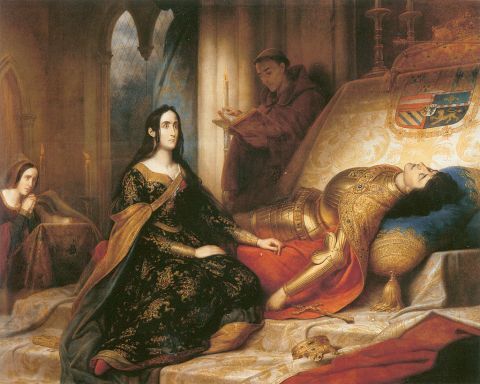 (public domain)
(public domain)Stories were circulated that Joanna did not allow female attendants to go near the coffin out of jealousy, and she would often open the coffin and weep over Philip’s corpse.8 This is when the nickname “Joanna the mad” or “Juana la loca” really took off.
Part three coming soon.
Sources
J. Fox., Sister Queens: Katherine of Aragon and Juana, Queen of Castile
G. Tremlett., Isabella of Castile- Europe’s First Great Queen
B. Aram, Queen Juana: Legend and History in M Gomez, S Juan-Navarro, P. Zatlin., Juana of Castile- History and Myth of the Mad Queen
E. Gascon Vera., Juana I of Castile, Catherine of Aragon and the Failure of Feminine Power and in the Construction of Empire in M Gomez, S Juan-Navarro, P. Zatlin., Juana of Castile- History and Myth of the Mad Queen
The post The Year of Isabella I of Castile- Joanna of Castile, A Regnant Queen (Part two) appeared first on History of Royal Women.
November 5, 2024
The Year of Isabella I of Castile – Joanna, the unexpected heiress (Part one)
On 6 November 1479, Queen Isabella I of Castile and King Ferdinand II of Aragon welcomed a new child to their growing family, a little girl named Joanna. Joanna was healthy and beautiful, with strawberry-blonde hair and blue eyes. As the third child, Joanna was not the heir to either of her parents’ thrones and would instead be educated and raised to enter an important dynastic marriage.
The infanta was born in an exciting new era for her country: her parents’ marriage had united “Spain” for the first time, Muslim rule had ended and Spain was expanding through global exploration. Joanna and her four siblings were all destined to rule over or marry into the great houses of Europe and were of great importance.
Royal children were often raised in separate households from their parents, but as a child, Joanna and her siblings travelled around with the court, spending time between various castles, palaces and even military camps. Her parents always kept their children with them and provided them with a fantastic education. Joanna received tuition in history, law, maths, languages, reading, grammar, dancing, poetry, music, sewing, needlepoint and art. Exposure to Spain’s differing regions and peoples also gave Joanna a wide knowledge of her parents’ realms.
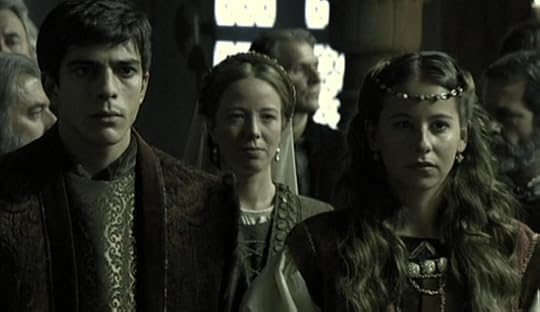 Joanna and John learn of their double alliance as portrayed in Isabel (2011)(Screenshot/Fair Use)
Joanna and John learn of their double alliance as portrayed in Isabel (2011)(Screenshot/Fair Use)In 1496, a double marriage was arranged: Joanna and her brother John were to be married to two Habsburg children as part of a wider alliance between the powerful dynasties. Sixteen-year-old Joanna was set to marry Philip of Austria, the eighteen-year-old son of Maximilian I, Holy Roman Emperor. John was set to marry Philip’s sister Margaret.
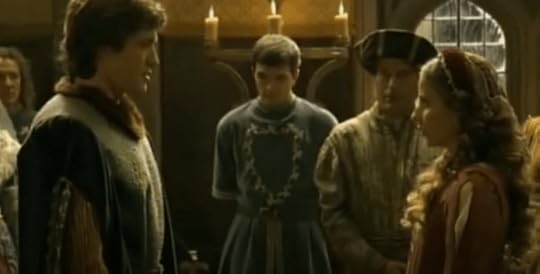 Joanna meets Philips as portrayed in Isabel (2011)(Screenshot/Fair Use)
Joanna meets Philips as portrayed in Isabel (2011)(Screenshot/Fair Use)At the age of sixteen, Joanna left her homeland and her family behind and sailed to the Low Countries. The young princess travelled in an incredible fleet of 41 boats packed with clothing, jewellery, perfumes, food, gold plate and household staff.1 Spain had to make a great impression on the fashionable Burgundian Court. An elaborate marriage ceremony had been planned for Philip and Joanna, but when the pair met for the first time, a month after Joanna’s arrival in Flanders, Philip brought the wedding forward so that the couple could consummate their union sooner. It seemed the young couple were instantly attracted to each other, and that love was blossoming.2
Joanna was said to be “lost in love” with Philip, but it seemed his passion for her had faded rather quickly.3. The honeymoon period did not last long, and Philip soon began isolating Joanna by removing her Spanish friends and staff and keeping tight control over her finances. When many of Joanna’s Spanish attendants died because of cold weather or plague, she was further isolated, while Philip was attending parties with mistresses or spending months at a time away from court.4.
As Joanna became cut off from other people and Philip spent more and more time away from court, rumours began that she was mentally ill; these rumours would spiral out of control and shape the rest of Joanna’s life as well as her legacy. Joanna loved her husband passionately and could not tolerate his affairs, often becoming angry and violent over his flings. Many have remembered Joanna as “La Loca” or “the mad”, and even today, historians debate her mental state.
Joanna was set to continue on this path as Archduchess of Austria, living a quiet life out of the public eye and bearing Habsburg children for her husband. However, a shocking series of events changed Joanna’s destiny. On 4 October 1497, Joanna’s brother John passed away after a period of illness; John was survived by his new wife Margaret, who was pregnant with his heir, a child that would instead inherit Ferdinand and Isabella’s realms. Sadly, this was not to be, as Margaret gave birth to a stillborn daughter six months later. Isabella, Joanna’s older sister, became heir to Castile’s crown and was known by the title Princess of Asturias. Isabella was not declared heir to Aragon as they did not support female rule, though if she had a son, he would be heir to Aragon. Isabella was not heir for long; however, as, like her brother before her, she died young, following the birth of her son in August 1498. Isabella’s son and the heir to his grandparent’s kingdoms would never live to rule, as he died before his second birthday in 1500.5.
This tragic and unexpected series of deaths was devastating to Joanna, but it also meant that she was now heir and in a position she never expected. Her mother, Isabella, wrote constantly, urging Joanna and Philip to visit Spain to be sworn in as the heirs to both Castile and Aragon (having Philip as a co-monarch in Aragon softened the reluctance towards a female ruler). Joanna was unable to travel for a number of years as she had given birth to three children in quick succession: a daughter named Eleanor, a son named Charles and another daughter named Isabella for her grandmother.
In January 1502, Philip and Joanna finally entered Castile to be recognised formally as heirs. Here, Joanna was proclaimed Princess of Asturias and heiress. Philip was declared as a mere consort, a fact which enraged him and led him to leave for the Low Countries without Joanna, who was at this point pregnant for a fourth time.6
Part two coming soon.
Sources
J. Fox., Sister Queens: Katherine of Aragon and Juana, Queen of Castile
G. Tremlett., Isabella of Castile- Europe’s First Great Queen
B. Aram, Queen Juana: Legend and History in M Gomez, S Juan-Navarro, P. Zatlin., Juana of Castile- History and Myth of the Mad Queen
E. Gascon Vera., Juana I of Castile, Catherine of Aragon and the Failure of Feminine Power and in the Construction of Empire in M Gomez, S Juan-Navarro, P. Zatlin., Juana of Castile- History and Myth of the Mad Queen
The post The Year of Isabella I of Castile – Joanna, the unexpected heiress (Part one) appeared first on History of Royal Women.
Which royal women can vote in the US Presidential Election?
Americans head to the polls today to elect their next president. Several members of royal families can cast their vote for the 47th President of the United States.
The most obvious royal who can and will vote is the Duchess of Sussex. A California native, Meghan is a known Democrat and has made her dislike of President Donald Trump well-known. It’s widely assumed she will be voting for Vice President Kamala Harris. After she and the Duke of Sussex stepped back as working royals in 2020, they have resided in her home state of California.
 (Screenshot/Fair Use)
(Screenshot/Fair Use)There are other members of royal families across the globe who are eligible to vote in the election. Whether or not they have sent in an absentee ballot or are voting in person is not known. We take a look at a selection of those who could cast a vote below:
Several Greek royals are American citizens and could vote in the election. One of these is the daughter of Crown Prince Pavlos and Crown Princess Marie-Chantal, who was born in the States, Princess Maria Olympia.
Embed from Getty ImagesA lesser-known royal, Princess Ariana of Ethiopia, is still thought to hold her US citizenship, and as a result, she could vote in the US Presidential Election. She is the wife of Prince Joel of Ethiopia – the great-grandson of Ethiopia’s last monarch, Haile Selassie I.
Embed from Getty ImagesAnother royal who could cast a ballot is The Hereditary Princess of Saxe-Coburg and Gotha (born Kelly Rondestvedt in Florida). She lives in Germany with her family, and it is not thought she has renounced her American citizenship. As such, she is able to vote in the election if she so chooses.
Embed from Getty ImagesOf course, this is not an all-inclusive list. There are other members of royal families who could be eligible to vote in the United States, but we did not list them here. Royals like Queen Noor of Jordan and Crown Princess Marie Chantal of Greece (who were born as American citizens) cannot vote as they either lost or renounced their US citizenship.
The post Which royal women can vote in the US Presidential Election? appeared first on History of Royal Women.
November 3, 2024
Book Review: Elizabeth II: A Queen for Our Time by Chris Jackson
Queen Elizabeth II was an icon during her lifetime, and she became the longest-reigning British monarch in 2022.
Elizabeth II: A Queen for Our Time by Chris Jackson was released in 2021, a year before the death of this remarkable woman. This is, first and foremost, a book filled to the brim with photographs of the monarch and her engagements. The photographs are wonderful, and I expected nothing less from Chris Jackson. The captions are candid and factual.
Definitely don’t expect an in-depth biography of Queen Elizabeth II, as this wasn’t meant to be one. I would love to see this updated to include the funeral of the Queen.
Elizabeth II: A Queen for Our Time by Chris Jackson is available now in the UK and the US.
The post Book Review: Elizabeth II: A Queen for Our Time by Chris Jackson appeared first on History of Royal Women.
November 2, 2024
Book News Week 45
Book News week 45 – 4 November – 10 November 2024
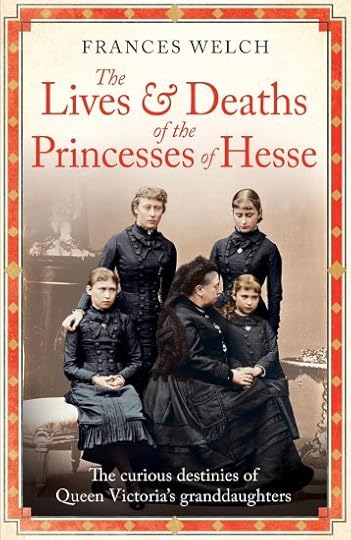
The Lives and Deaths of the Princesses of Hesse: The curious destinies of Queen Victoria’s granddaughters
Hardcover – 7 November 2024 (UK & US)
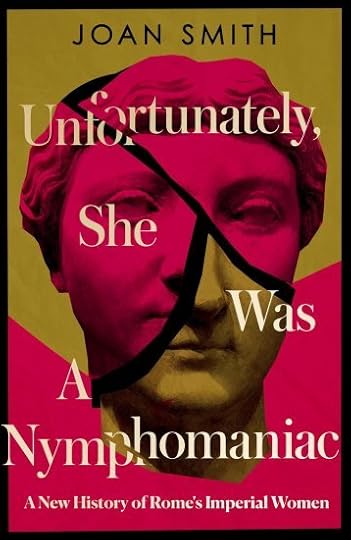
Unfortunately, She was a Nymphomaniac: A New History of Rome’s Imperial Women
Kindle Edition/Hardcover – 7 November (US & UK)
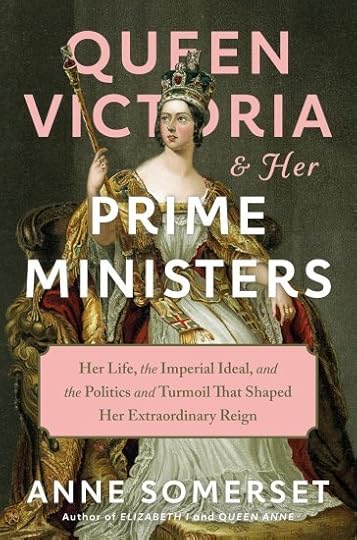
Queen Victoria and Her Prime Ministers: Her Life, the Imperial Ideal, and the Politics and Turmoil That Shaped Her Extraordinary Reign
Hardcover – 5 November 2024 (US & UK)
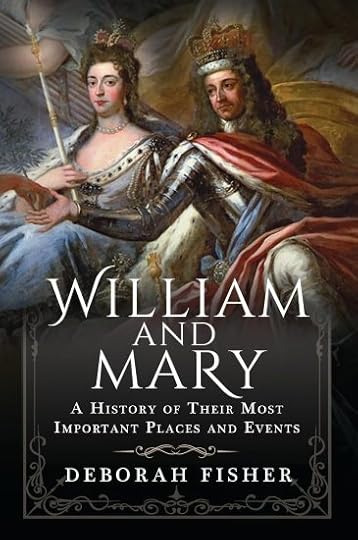
William and Mary: A History of Their Most Important Places and Events
Hardcover – 7 November 2024 (US)
The post Book News Week 45 appeared first on History of Royal Women.
November 1, 2024
Q&A: History of Royal Women meets Gytha Godwinson
In honour of the release of Ellen Alpsten’s new novel The Last Princess, please enjoy this imagined Q&A with its leading lady, Gytha Godwinson.
What an honour to meet the last Anglo-Saxon Princess here to discuss Royal Women. Welcome, Gytha Godwinson…
Please don’t. I never asked for what came to me. When we celebrated Modranecht – which is the old, beautiful name for what you call Christmas and may be translated as ‘Mother’s Night’ – at home in Bosham Manor in the Winter of 1065, I felt so secure in my family, its love, wealth and happiness. Little did I know that the seeds of discord had already been sewn. Their shoots made the firm ground beneath my feet crack open, turning it into quicksand. Whatever came after swallowed my world, such
as a tidal wave.
Oh my God. I have goosebumps now. Can we start from the beginning? The ladies of the House of Godwin – or the House of Dragons – were not always Royal Women.
No, but the men of our family owe us everything. They are a feral pack and utter upstarts. What others consider an unbreakable vow, is but a mere string of words to them. Betrayal runs generations deep: my grandfather Godwin lay the foundation for the family’s stellar rise when he married Grandmother, a relative of Canute the Great, the sole ruler of the North Sea Empire of England, Norway, and Denmark. How did he, a mere huscarl, do this? He was very handsome, and silver-tongued. My father,
Harold, was their eldest surviving son and the heir to their House of Dragons – our heraldic beast is a two-legged, winged Wyvern. Father was ambitious but lacked the funds – until his ‘Danelaw’ wedding to my mother Edith Swanneck. It was a simple hand-fastening: Grandmother tied their wrists together. Mother was England’s best catch: her dowry encompassed two-hundred-and-fifty ‘hides’, estates and their manors and belltowers. This offered father the fyrd, the simple soldiers whose fortunes rose and fell with ours, and the geld, the rental income we required to live. But there was also one Royal woman in my family already: my aunt, King Edward the Confessor’s Queen. But she spent most of her married years in a monastery and bore England no son and heir…
Which is the beginning of all trouble. May I mention Eldgyth of Mercia, your Stepmother, whom Harold II wanted to crown as his Queen?
If you must. The Men of Mercia were our enemies as long as we may think. Their women are no less fearsome: one Princess refused to get married, the other never lay with her husband again after giving birth once. There was, she says, no point in ‘something so short resulting in something so painful’. But enough of Eldgyth, who came accompanied by the Tylweth Teg, the green-faced Welsh fairy folk. Do you know that Father had slaughtered her first husband, King Gruffud of Wales? She placed her wed, a golden ring, on the same hand that murdered her first love. If ever there was a peace-weaver, it’s her.
A Peace-weaver! That sounds fascinating.
The roles of Royal women in the High Middle Ages were well defined: Cupbearer. Peace-Weaver. Memory-Keeper. Under normal circumstances, women of noble blood had two choices in my days: either join a monastery or make a good match in marriage. But in order to survive, I had to make a third choice – Exile. The word says it all. It is a short, sharp cut, which severs me from all that I am worth in my world: my home and my family.
You dare to be different: you choose flight AND fight and you write world history. Your fabulous fate spans myth and modernity.
All I do is place one foot in front of the other, hoping to survive that slaughter-stained year: 1066. For this, I must question the powers in place – the patriarchy and the church. I refuse to be mere bloodstock, fit for royal breeding. All my suffering and loss cannot be in vain: I seek love, friendship and belonging. Normans, Anglo-Saxons and the Norse – we are like three sides of a kub, all related through marriage. So, from the candle-lit splendour of our great Hall and the furies reigning a field in Hastings, I take things further, towards the vast, perilous unknown and what lies beyond the raging North Sea. Follow me…
Did you find Royal Women of a different nature there?
I do, and I don’t. The Viking women fight in battle, defend their settlement and are as ferocious as their men. They are an inspiration in many things, and in others they suffer as we do. Tora, the powerful Norse Seidr, plays her cards well. If she, too, was but the handfastened wife of Harald Hardrada, the last Viking, she chooses her own battlefield. And she always wins. Surviving her and her lethal hatred is the ultimate challenge I face. Which reminds me that I must leave…
What for? A royal ceremony?
I wish. No. Both my grandmother and the people of Soderup are consummate slavers. Your word ‘enthralled’ comes from the Norse word for an enslaved human being – thrall. I do not want to say more, but I have many duties from dawn till dusk. But nothing lasts forever. From the ashes of my father’s cursed kingdom, I make a new empire emerge. Which one? Let me surprise you.
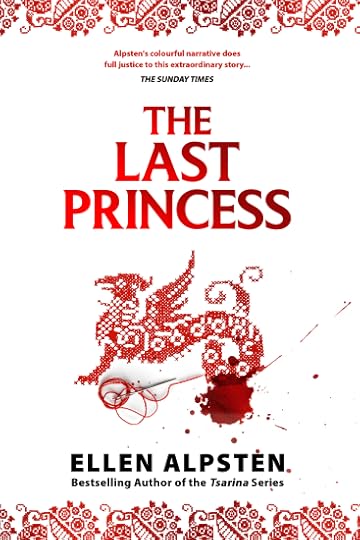
Ellen Alpsten was born and raised in the Kenyan highlands and holds a MSc from the IEP de
Paris. She worked as a News-Anchor for Bloomberg TV before writing fulltime. Her debut
novel ‘Tsarina’ and its sequel ‘The Tsarina’s Daughter’ (both Bloomsbury Publishing) are
translated in twenty languages and were shortlisted for numerous awards.
Order ‘The Last Princess’ here.
The post Q&A: History of Royal Women meets Gytha Godwinson appeared first on History of Royal Women.
October 31, 2024
The Stuart Tiara
The Stuart Tiara is perhaps the Dutch royal family’s showstopper. Its central diamond is almost a whopping 40 carats.
The central diamond is called The Stuart Diamond, and its first recorded owner was Queen Mary II of England, who reigned jointly with her husband, King William III, also Prince of Orange. Mary purchased the diamond after their wedding, and it was first set into a brooch. After Mary’s death, William inherited the diamond. Following his death a few years later, the diamond returned to the Netherlands as part of his Dutch property. Many years later, William V, Prince of Orange, fled to England, and while in exile, his wife reset the diamond into a pendant on a necklace. When their son became King in 1815, the diamond became part of the royal collection. The diamond briefly returned to England as it was on display in the Great Exhibition of 1851.1
The Stuart Diamond was finally placed in a tiara in 1897 when Queen Emma ordered a tiara for her daughter’s inauguration. Queen Wilhelmina indeed wore the tiara, including the Stuart Diamond, for her inauguration. She wore the tiara again, albeit without the top row of diamonds and the central Stuart diamond, for her wedding in 1901.
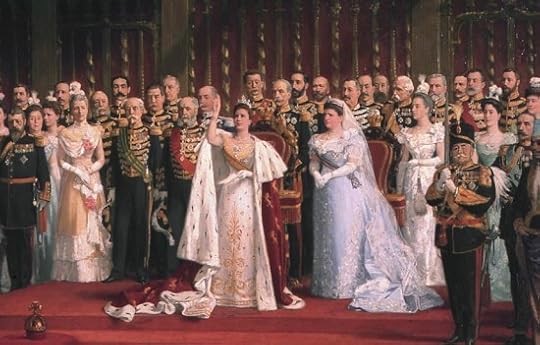 (public domain)
(public domain)It was a favourite of Queen Wilhelmina’s daughter Juliana, but Juliana’s daughter Beatrix was never seen in the tiara at all. Queen Maxima has worn the tiara in several settings now.
Embed from Getty ImagesThe post The Stuart Tiara appeared first on History of Royal Women.
October 30, 2024
Taking a look at Princess Margaretha, Mrs. Ambler as she turns 90
Princess Margaretha of Sweden was born on 31 October 1934 as the eldest child of Prince Gustaf Adolf, Duke of Västerbotten, and Princess Sibylla of Saxe-Coburg and Gotha. She was born at Haga Palace, and she and her younger sisters (Princess Birgitta, Princess Désirée and Princess Christina) were known as the Haga Princesses.
Embed from Getty ImagesAlthough she was the eldest child, she was never in the line of succession as Sweden barred women from the throne. Her younger brother became King Carl XVI Gustaf in 1973, as their father had died in a plane crash in 1947.
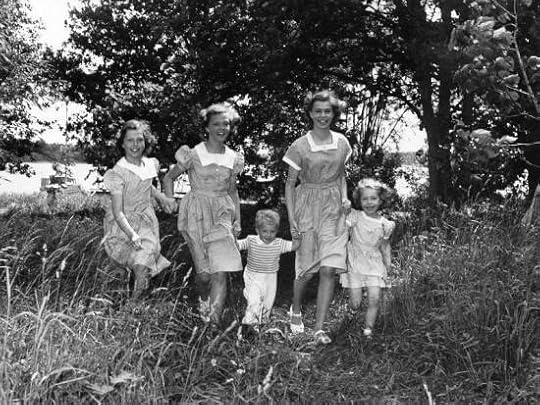 (public domain)
(public domain)Princess Margaretha was privately educated within the Palace and later attended the Stockholm dressmaking school, Märthaskolan. She also studied ceramics and textiles at Nyckelvik School and trained as an occupational therapist at Karolinska Hospital.
Margaretha met her future husband, John Ambler, at a dinner party, and their engagement was announced on 28 February 1964. The New York Times described him as “tall and polished.”1 When asked what she found interesting in her fiance, she joked, “I found out that he was born on June 6 – the Swedish national day!”2
They were married on 30 June 1964 in Gärdslösa Church on the island of Öland. The New York Times reported, “The bridge was given away by her grandfather, King Gustaf VI Adolf, who promised that she would keep her title. She will be called Princess Margaretha, Mrs. Amblers. The Princess is 29 years old. Her bridegroom, who is 40, is one of the directors of an English transport corporation, Atlas Express. The wedding was televised and was seen abroad through Eurovision. The bride wore a gown of white faille with a train and a long veil of Brussels lace. Her golden crown was the one traditionally worn by brides in the little village church, built during the Middle Ages.”3 The newlyweds went to live in the United Kingdom.
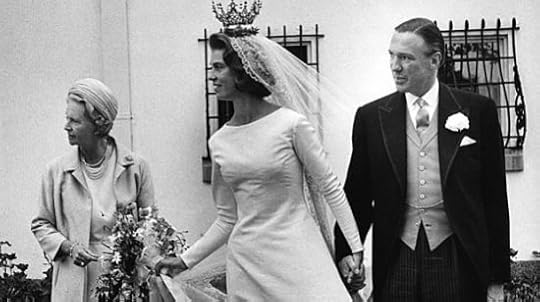 (public domain)
(public domain)They went on to have three children together: Sybilla (born 1965), Edward (born 1966) and James (born 1969). Margaretha and John separated in the 1990s but were never officially divorced. He died on 31 May 2008.
Embed from Getty ImagesAlthough Sweden introduced absolute primogeniture in 1980, this was done only for her brother’s descendants. Princess Margaretha does not have any official duties, although she does return to Sweden for family events.
Embed from Getty ImagesThe post Taking a look at Princess Margaretha, Mrs. Ambler as she turns 90 appeared first on History of Royal Women.



